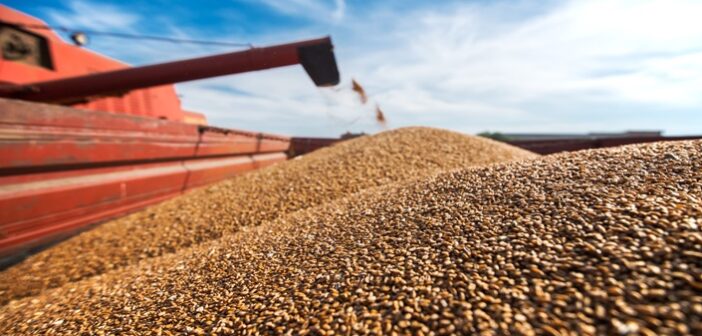As June closes grain prices are largely unchanged from the previous week’s (21st June). The latest AHDB Grain Market Report shows UK feed wheat futures (Nov-24) at £196.75/t, down just 0.15p. The May-25 contract gained slightly, currently standing at £205.10
Price support is coming from concerns over Northern Hemisphere weather. A forecast heatwave in parts of Europe, and flooding concerns in parts of the US are raising concerns over crop conditions. However, the rapidly progressing US winter wheat harvest and improved Russian weather have limited any major gains (LSEG).
Milling wheat premiums easing?
The AHDB report the gap between the UK monthly average ex-farm spot prices for bread and feed wheat fell to £56.40/t in May. This is down from £62.10/t in April, and £70.60/t a year earlier (May 23). However, this still remains historically high in comparison to the five-year average for May of £29.50/t.
But milling premiums look to be edging higher again. In the week ending 20 June 2024 (latest AHDB data), UK spot ex-farm bread milling wheat averaged £64.80/t more than feed wheat.
Delivered prices, which include haulage costs and more, for new crop bread wheat are also still at a firm premium to feed wheat futures. Bread wheat to be delivered into the North West in November was quoted at £279.50/t on 20th June, a £82.05/t premium to Nov-24 futures.
What to expect going forward?
As has been well reported, milling premiums have been firm as of late due to the limited availability of domestic milling-grade wheat. On top of this, despite the cost-of-living crisis, overall flour demand has remained firm. As such, in AHDB’s May UK supply and demand estimates, wheat demand by flour millers was forecast up slightly on the year.
Due to the limited domestic supply, and subsequent higher domestic prices, it’s expected that flour millers have used and will continue to use a higher proportion of imported wheat this season and next. This season so far (Jul-Apr), wheat imports (incl. durum) have totalled 1.836 Mt, up 64.6% on the year, and up 25.4% on the five-year average. In the latest AHDB UK supply and demand estimates, full season imports for 2023/24 were estimated at 2.175 Mt.
While the AHDB do not yet have trade data available for May, it’s likely the continued firm import pace of competitively priced wheat weighed on the domestic milling premium. It is also important to note that in May, feed grain prices rose notably, which could have meant feed wheat prices were supported relative to bread wheat.
Where next?
Premiums will likely stay historically high due to short domestic supply. At the same time, to an extent, a heavier flow of milling wheat imports will continue as we head into the new season due to expectations of a small 2024 UK crop. With the volume of imports needed, it is unlikely in the short-term that premiums will go back to where they were at the end of last season, when bread wheat held firm despite feed wheat dropping off.
The volume of imports moving forward will depend slightly on the comparative price of imported wheat. As such, domestic premiums could be pressured further moving forward if imported bread wheat prices decline. With the majority of imports coming from Germany and Canada, it will be important to keep an eye on conditions in these countries over the next few weeks.
Oilseeds gain
Nov-24 Paris rapeseed futures climbed slightly over the same period, standing at €477.25/t.
Despite losses in the US soyabean market, European rapeseed prices followed Canadian canola and US soya oil up on the back of gains from bargain buying. Statistics Canada is due to release its latest acreage report. In a Reuters pre-report poll, analysts expect the Canola area to sit at 8.71 Mha, up from 8.66 Mha in March.




